Gorham Manufacturing Company
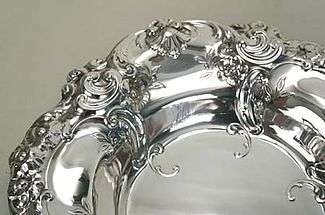
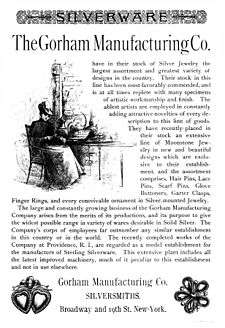
The Gorham Manufacturing Company is one of the largest[1] American manufacturers of sterling and silverplate and a foundry for bronze sculpture.[2]
History
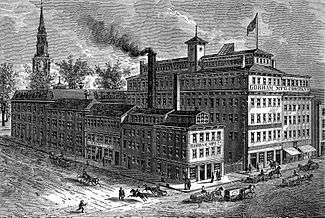
Gorham Silver was founded in Providence, Rhode Island, 1831 by Jabez Gorham,[3] a master craftsman, in partnership with Henry L. Webster.[4] The firm's chief product was spoons of coin silver. The company also made thimbles, combs, jewelry, and other small items. In 1842, the Congress enacted a tariff which effectively blocked the importation of silverware from outside the United States, which aided the American silver industry. Jabez Gorham did not take full advantage of this opportunity, but in 1847 Jabez retired and his son, John Gorham[5] succeeded him as head of the company.
John Gorham introduced mechanized production methods, enlarged the premises in downtown Providence, improved the designs, and expanded the product line. In 1852, Gorham toured many of Europe's silver workshops and manufacturers, speaking with individual specialists, including master craftsmen and toolmakers. He sought highly skilled foreign workmen to train his American workers and hired George Wilkinson, a premier designer and workshop manager, from England. In 1865, the Rhode Island legislature granted a charter in the name of Gorham Manufacturing Company and in 1890, the company relocated to a factory on Adelaide Avenue in Providence.
During the heyday of American silver manufacturing, approximately 1850 - 1940, Gorham was highly influential. William C. Codman, one of Gorham's most noted designers, created the Chantilly design in 1895, which has become the most famous of Gorham's flatware patterns. The company has produced matching holloware in both sterling and silverplate.
In 1884, the company opened a store in the Ladies' Mile shopping district in Manhattan, New York City, but moved in 1905 to a Fifth Avenue building which it commissioned from architect Stanford White. In 1906, Gorham purchased another long-time rival, New Jersey-based Kerr & Co.
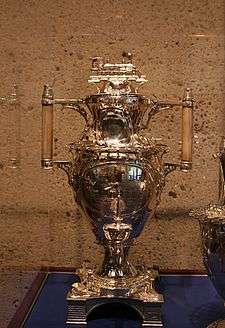
Textron purchased the company in 1967, a move that some critics claim decreased quality due to management's lack of understanding of Gorham's specialty, producing high-quality sterling silverware and holloware.[6] Textron began planning to sell the unit in 1988, completing the sale in 1989 to Dansk International Designs.[7][8] Brown-Forman Corporation acquired Gorham from Dansk in 1991.[9] The unit was sold in 2005 to Department 56 in the Lenox holdings transaction, with the resulting company renamed as Lenox Group.[10][11]
However, in 2009 Lenox Group filed for Chapter 11 bankruptcy and it was subsequently acquired by Clarion Capital Partners, now operating under the name Lenox Corporation, which has three operating divisions, Lenox, Dansk, and Gorham.[11][12][13][14]
Major commissions
The White House has used Gorham silver services during many administrations. Mary Todd Lincoln purchased an impressive tea and flatware service for use in the White House in 1859. The tea service was presented to the National Museum of American History in 1957.[15] Mrs. Ulysses S. Grant asked Gorham to commemorate the country's one-hundredth anniversary with a spectacular Century Vase that contained over 2,000 oz (57,000 g) of sterling silver, and in 1899, it produced a grand "loving cup" composed of 70,000 dimes was designed for Admiral George Dewey. Colonel Henry Jewett Furber, president of Universal Life Insurance Company of New York, placed the largest single commission Gorham ever received for what became known as the famous Furber service. The opulent 740-piece service represents Victorian era dining at its most elaborate. The monumental silver and parcel-gilt "Neptune" epergne made for Furber as part of this service was displayed at the Philadelphia Centennial Exposition in 1876. Textron donated a large portion of the service along with other pieces to the Rhode Island School of Design Museum and they are on display in the permanent collection of American decorative arts.[16] In 1907, Gorham created an elaborate silver service for the battleship USS Rhode Island. When the Rhode Island was decommissioned following World War I, the US Navy returned the service to the State for public display. It is now on display in the State Room of the Rhode Island State House.[17] The George W. Bush family chose Gorham's Chantilly as the flatware service on Air Force One.
Gorham artisans also sculpted the famous monument of George Washington in the Capitol's Rotunda, the statue of Theodore Roosevelt that overlooks the Museum of Natural History in New York, and the famous Independent Man which tops the Rhode Island State House.
Gorham designed a number of elaborate trophies for sporting events, including the Borg-Warner Trophy for the Indianapolis 500, designed by Robert J. Hill.
European recognition
In 1886 a commentator wrote in the London Magazine of Art:
If we go to one of the first London silversmiths and ask for spoons and forks, we are met at once with the smiling query. "Yes, Sir; fiddle or old English?" Fiddle or old English! If we decline both those chaste designs we are assured that there is still a large selection of patterns remaining. The "Lily", the "Beaded", "King's Pattern", and "Queen's Pattern." There perforce, our choice must end....Mark the difference, in this one article, between the supine conservatism of the English manufacturers and the alertness and constant progress of the American maker. For instance [Gorham] would not be satisfied unless it produced every year or two new patterns, nearly all of which are beautiful, and of which they will produce a complete service of all articles for table use from a salt-spoon to a soup ladle.
In 1893, a French observer was surprised by America's "remarkable fertility in the variety of its patterns for table services." Of the flatware patterns designed by F. A. Heller (1839–1904) for Gorham he wrote "we have no idea of the richness of ornamentation of these services, and of the amount of talent expended by him in the engraving of the dies which he has made on the other side of the Atlantic."[18]
Buildings
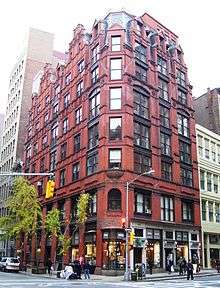
Two buildings connected with the Gorham Manufacturing Company have historical status:
- Gorham Manufacturing Company Building
This Queen Anne style building located at 889-891 Broadway at the corner of East 19th Street in the Flatiron District of Manhattan, New York City, within the Ladies' Mile Historic District, was designed by Edward Hale Kendall and built in 1883-1884 as the retail store of the company. At first, the company utilized the two lower floors with the remainder rented as bachelor apartments, but after a few years Gorham expanded into the rest of the building. The company left in 1905, and the building was converted by John H. Duncan in 1912 into lofts and offices, removing a corner tower and adding roof dormers. In 1977, it was restored to its original configuration, with a retail store on the ground floor and the remaining floors made into cooperative apartments. The building was designated a New York City landmark on June 19, 1984.[19][20][21]
- Gorham Building
When the company left its Ladies' Mile building, it was to move to this Italian Renaissance Revival palazzo-style building at 390 Fifth Avenue at West 36th Street in the Murray Hill neighborhood. Designed by McKim, Mead & White, with Stanford White as the partner in charge, and built in 1904-1906, the building features bronze balconies and friezes designed by Gorham's staff, and is topped by a cooper cornice. It was designated a New York City landmark on December 15, 1998, but not before the lower floors were significantly altered from their original design.[22][23]
Gorham as a sculpture foundry
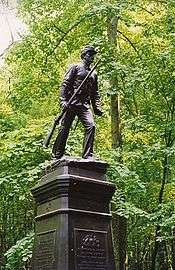
In the early 1880s Gorham began casting ecclesiastical items, such as lecterns and in 1889 the cast its first statue, The Skirmisher by Frederick Kohlhagen, located at Gettysburg National Military Park. In 1896, its casting of W. Granville Hastings bust, Judge Carpenter was the first in America using the lost-wax casting method. The foundry went on to become one of the leading art foundries in the United States.[2]
A 1928 book published by the Gorham Company, Famous Small Bronzes - A Representative Exhibit Selected from the Works of Noted Contemporary Sculptors, featured full page photographs of sculptures by such notable sculptors as: Chester Beach, Gutzon Borglum, Allan Clark, Cyrus Dallin, Abastenia St. Leger Eberle, Laura Gardin Fraser, Harriet Frishmuth, Emil Fuchs, Karl Gruppe, Anna Hyatt Huntington, Isidore Konti, R. Tait McKenzie, Edith Parsons, Alexander Phimister Proctor, and Mahonri Young.[24] the company also cast monumental works for such luminaries of the American Renaissance as Augustus Saint Gaudens, Daniel Chester French and James Earle Fraser (sculptor).
The Smithsonian archives of American art list Gorham foundry over 700 times in its inventory of American sculpture.[25]
See also
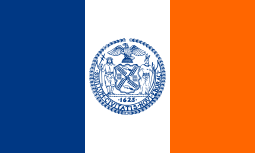 New York City portal
New York City portal Companies portal
Companies portal
References
- ↑ "Gorham Manufacturing Company". Cooper-Hewitt, National Design Museum. Retrieved 2013-07-22.
- 1 2 Shapiro, Michael Edward. Bronze Casting and American Sculpture: 1850 – 1900. Newark: University of Delaware Press. pp. 170–171. ISBN 978-0874132182.
- ↑ "Jabez Gorham". ancestry.com. Retrieved 2013-07-22.
- ↑ "Henry Lamson Webster". ancestry.com. Retrieved 2013-07-22.
- ↑ "John Gorham". ancestry.com. Retrieved 2013-07-22.
- ↑ Wyss, Bob (14 April 2002). "Lost Luster". The Providence Journal. Archived from the original on November 14, 2013. Retrieved 2013-07-22.
- ↑ "Textron Plans Sale Of Gorham Unit". The New York Times. 17 August 1988. Retrieved 2013-07-22.
- ↑ Louise,Elaine. "Design School Goes For Silver" Chicago Tribune (February 16, 1992)
- ↑ Strom, Stephanie. "Business People: New Owner Replaces President of Dansk" The New York Times (July 6, 1991)
- ↑ "Brown-Forman to Sell Lenox, Inc. to Department 56" (Press release). Brown-Forman. 21 July 2005. Retrieved 2013-07-22.
- 1 2 Feyder, Susan (19 August 2009). "Department 56 meets Chapter 11". Star Tribune. Retrieved 26 June 2016.
- ↑ "About the Lenox Corporation". Lenox.Com. Lenox Corporation. Retrieved 26 June 2016.
- ↑ "Lenox to Crystalize M&A Plans". The Wall Street Journal. Dow Jones & Company. 19 May 2015. Retrieved 26 June 2016.
- ↑ "Gorham". Lenox.Com. Lenox (company). Retrieved 26 June 2016.
- ↑ [http://historywired.si.edu/object.cfm?ID=354--> "Mary Todd Lincoln's Silver Service"]. Smithsonian Institution. Retrieved 2013-07-22.
- ↑ Louie, Elaine (19 December 1991). "School Acquires Large Silver Collection". The New York Times. Retrieved 2013-07-22.
- ↑ >"National Register of Historic Places Inventory- Nomination Form" (PDF). Rhode Island Secretary of State. 1 August 1970. Retrieved 2013-07-22.
- ↑ Ministère Du Commerce (France) (1895). Exposition internationale de Chicago en 1893; Rapport administratif sur l'Exposition internationale de Chicago (PDF) (in French). Paris. pp. 4–5.
- ↑ New York City Landmarks Preservation Commission; Dolkart, Andrew S. (text); Postal, Matthew A. (text) (2009), Postal, Matthew A., ed., Guide to New York City Landmarks (4th ed.), New York: John Wiley & Sons, ISBN 978-0-470-28963-1, p.76
- ↑ Mendelsohn, Joyce (1998), Touring the Flatiron: Walks in Four Historic Neighborhoods, New York: New York Landmarks Conservancy, ISBN 0-964-7061-2-1, OCLC 40227695, pp.95-96
- ↑ White, Norval & Willensky, Elliot (2000), AIA Guide to New York City (4th ed.), New York: Three Rivers Press, ISBN 978-0-8129-3107-5, p.195
- ↑ New York City Landmarks Preservation Commission; Dolkart, Andrew S. (text); Postal, Matthew A. (text) (2009), Postal, Matthew A., ed., Guide to New York City Landmarks (4th ed.), New York: John Wiley & Sons, ISBN 978-0-470-28963-1, p.99
- ↑ White, Norval & Willensky, Elliot (2000), AIA Guide to New York City (4th ed.), New York: Three Rivers Press, ISBN 978-0-8129-3107-5, p.227
- ↑ Famous Small Bronzes: A Representative Exhibit Selected From the Works of Noted Contemporary Sculptors. New York: Gorham Company. 1928.
- ↑ "Art Inventories Catalog". Smithsonian American Art Museum. Retrieved 2013-07-22.
Bibliography
- "Silver in America, 1840-1940" - Magazine Antiques, December 1994 by Charles L. Venable
- Gorham Silver, 1831-1981 - N.Y., Dodd, Mead, 1983, by Charles H. Carpenter
External links
| Wikimedia Commons has media related to Gorham Manufacturing Company. |
- Gorham's Whistles at the Whistle Museum
- Gray, Christopher. "A Silver-Footed Residence for Gentlemen." The New York Times. September 3, 2009.
- Gray, Christopher. "Streetscapes/The 1905 Gorham Building, at Fifth Avenue and 36th Street; Recreating a Stanford White Design -- Using Paint." The New York Times. October 22, 2000.
Coordinates: 40°44′59″N 73°59′17″W / 40.74969375°N 73.988025°W